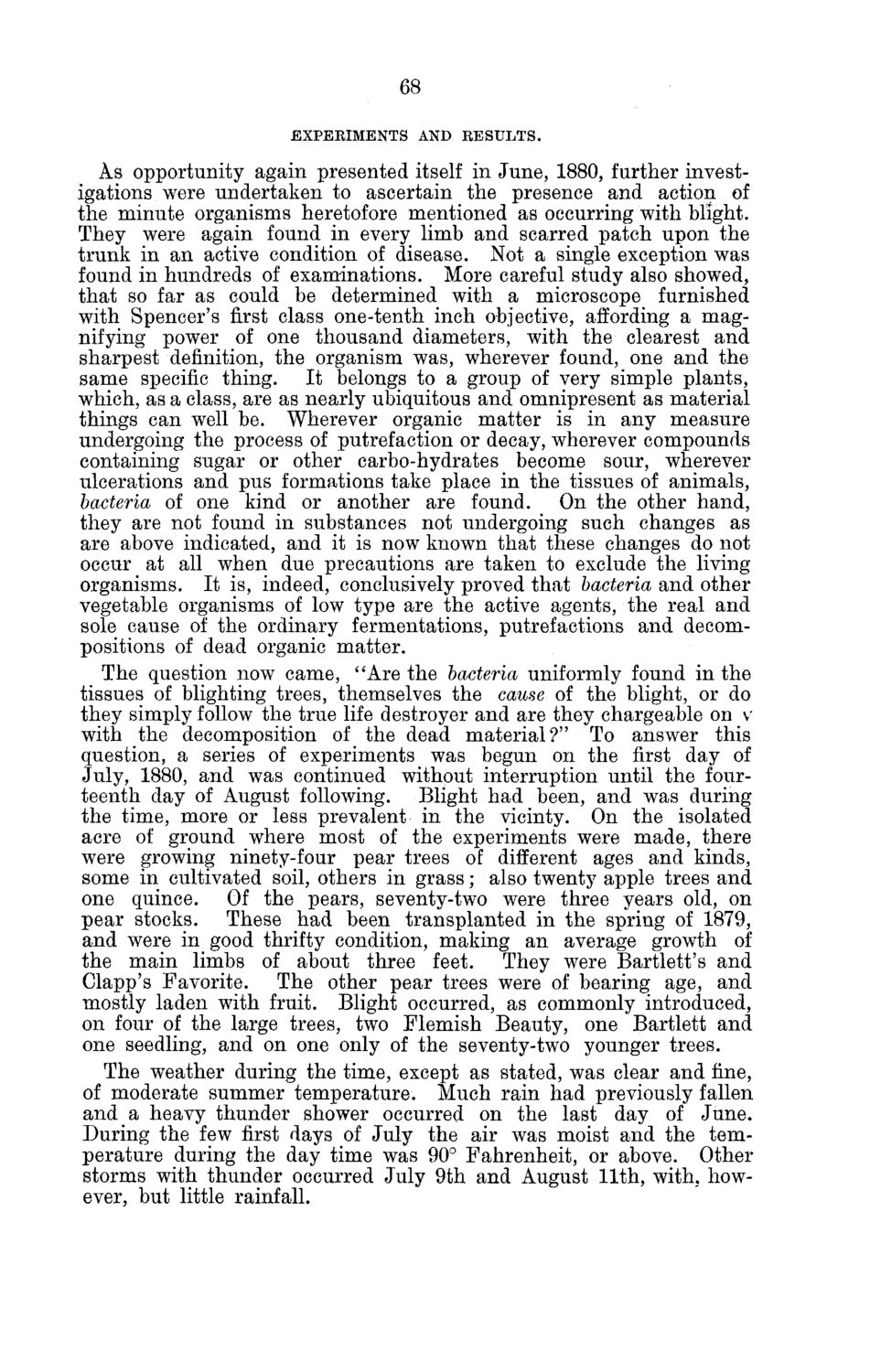| |
| |
Caption: Board of Trustees Minutes - 1880
This is a reduced-resolution page image for fast online browsing.

EXTRACTED TEXT FROM PAGE:
68 EXPERIMENTS AND RESULTS. As opportunity again presented itself in June, 1880, further investigations were undertaken to ascertain the presence and action of the minute organisms heretofore mentioned as occurring with blight. They were again found in every limb and scarred patch upon the trunk in an active condition of disease. Not a single exception was found in hundreds of examinations. More careful study also showed, that so far as could be determined with a microscope furnished with Spencer's first class one-tenth inch objective, affording a magnifying power of one thousand diameters, with the clearest and sharpest definition, the organism was, wherever found, one and the same specific thing. It belongs to a group of very simple plants, which, as a class, are as nearly ubiquitous and omnipresent as material things can well be. Wherever organic matter is in any measure undergoing the process of putrefaction or decay, wherever compounds containing sugar or other carbo-hydrates become sour, wherever ulcerations and pus formations take place in the tissues of animals, bacteria of one kind or another are found. On the other hand, they are not found in substances not undergoing such changes as are above indicated, and it is now known that these changes do not occur at all when due precautions are taken to exclude the living organisms. It is, indeed, conclusively proved that bacteria and other vegetable organisms of low type are the active agents, the real and sole cause of the ordinary fermentations, putrefactions and decompositions of dead organic matter. The question now came, ' 'Are the bacteria uniformly found in the tissues of blighting trees, themselves the cause of the blight, or do they simply follow the true life destroyer and are they chargeable on v with the decomposition of the dead material?" To answer this question, a series of experiments was begun on the first day of July, 1880, and was continued without interruption until the fourteenth day of August following. Blight had been, and was during the time, more or less prevalent in the vicinty. On the isolated acre of ground where most of the experiments were made, there were growing ninety-four pear trees of different ages and kinds, some in cultivated soil, others in grass; also twenty apple trees and one quince. Of the pears, seventy-two were three years old, on pear stocks. These had been transplanted in the spring of 1879, and were in good thrifty condition, making an average growth of the main limbs of about three feet. They were Bartlett's and Clapp's Favorite. The other pear trees were of bearing age, and mostly laden with fruit. Blight occurred, as commonly introduced, on four of the large trees, two Flemish Beauty, one Bartlett and one seedling, and on one only of the seventy-two younger trees. The wTeather during the time, except as stated, was clear and fine, of moderate summer temperature. Much rain had previously fallen and a heavy thunder shower occurred on the last day of June. During the few first days of July the air was moist and the temperature during the day time was 90° Fahrenheit, or above. Other storms with thunder occurred July 9th and August 11th, with,, however, but little rainfall.
| |